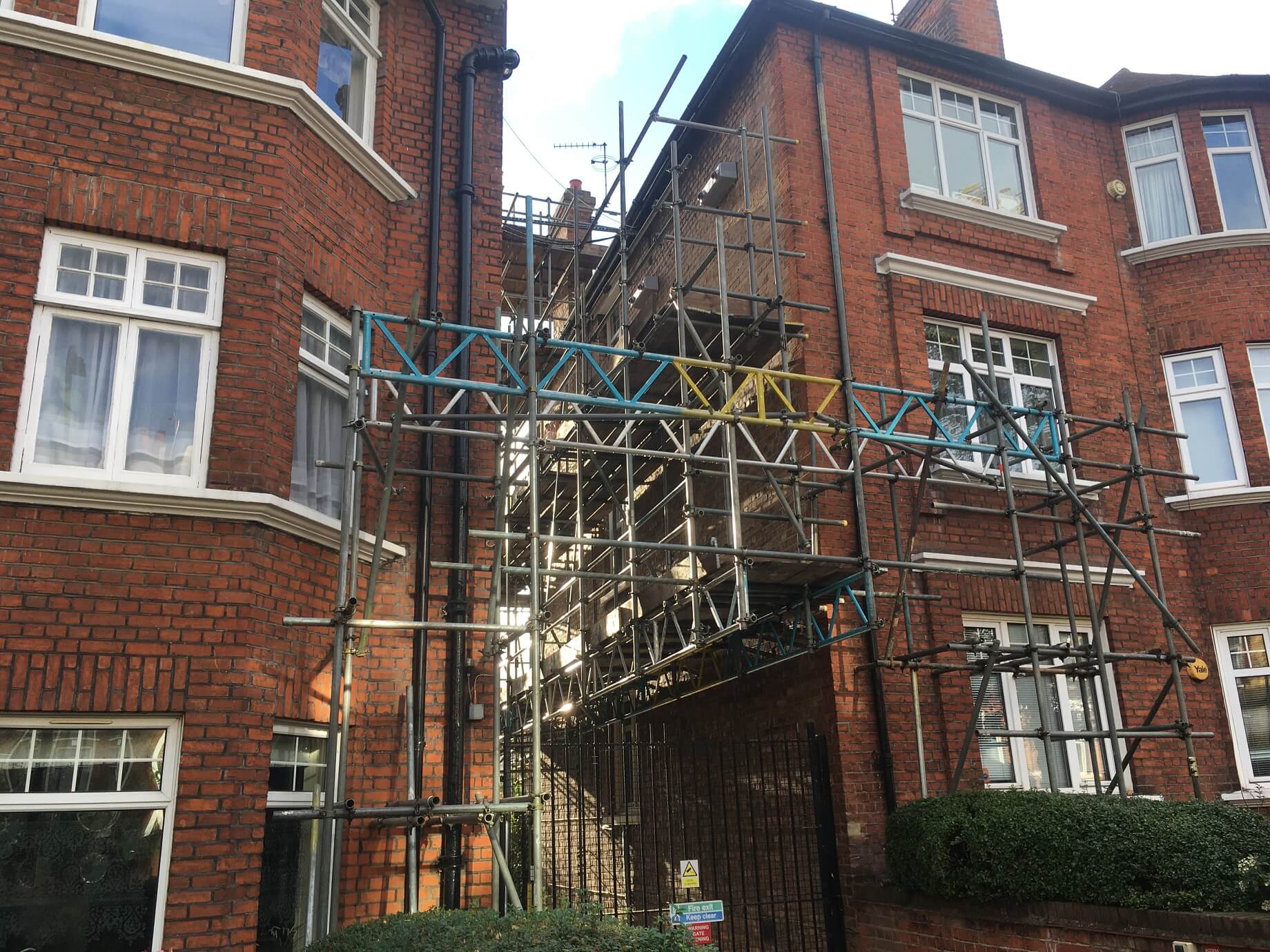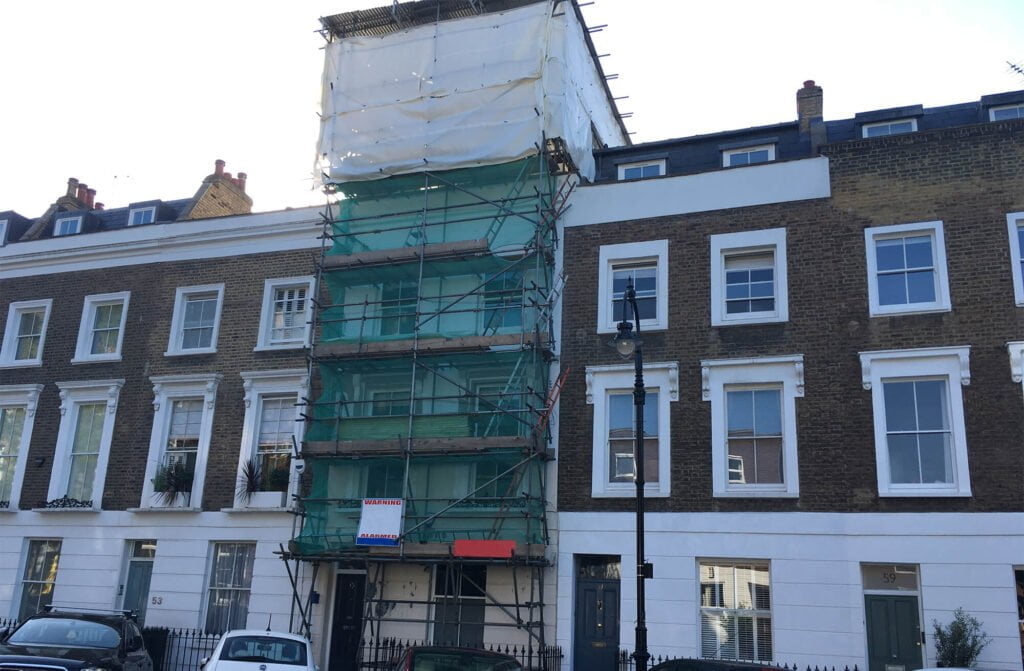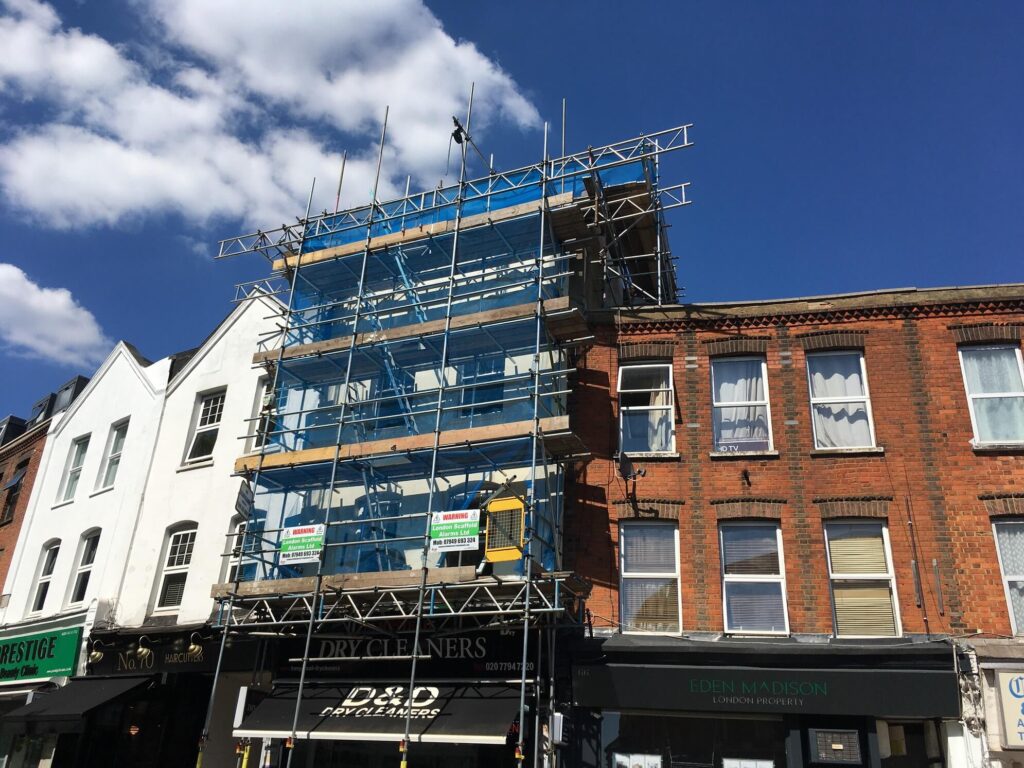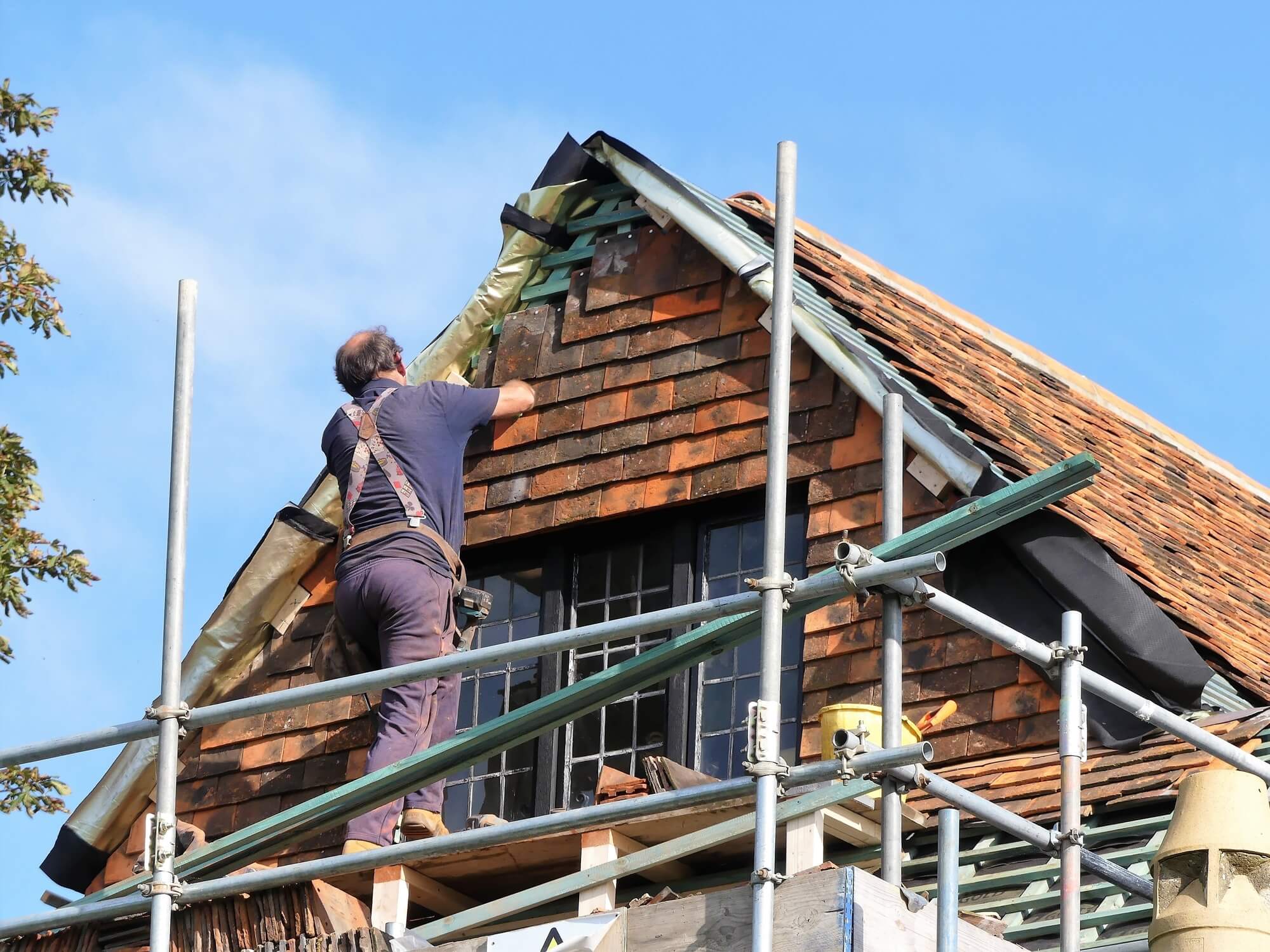Scaffolding is crucial for most construction projects as it aids in supporting builders and providing a stable platform to place building materials as well as supporting the original structure. Be it a new build or a simple repair project, you might encounter the need to gain access to your neighbour’s land to erect scaffolding for your ongoing project.

Key Topics
- When do I have the right to erect scaffolding on private property?
- Can my neighbour put scaffolding on my land?
- Can a neighbour object to scaffolding?
- Can you get a court order to remove the scaffolding?
- Is there compensation for scaffolding in the garden?
- Scaffolding outside my window
- Rights for tenants
In most cases, if you’re on good terms with your neighbour, it’s a matter of asking them to permit you to erect your scaffold on their land. However, there are instances where you’re either not on good terms with your neighbour, or it is a commercial scaffolding that needs to be put up. In such instances, you must familiarise yourself with the neighbouring land act to know your legal rights on the same.
You are probably asking yourself questions like “Can I overhang scaffolding into neighbours airspace?” We have all the answers you might be looking for regarding your scaffolding rights and how to go about it.

When do I have the right to erect scaffolding on private property?
According to the access to neighbouring land act 1992, you are allowed to erect whatever scaffold types you need over your neighbours’ property only if it is to preserve an existing structure. You have the right to erect scaffolding on private property if it’s meant for essential repairs like fixing drainage, repairing a leaking roof, fixing a cracked wall, or any general maintenance.
If you ask your neighbour and s/he doesn’t grant permission to put scaffolding on their property, only then can you get a court order. If you have a good relationship with your neighbour, letting them know of the little intrusion (or a lot) before you erect scaffolding on their property is probably all you need.
Accessing your neighbour’s property without their permission is trespassing, whether you have a scaffolding license or not. If you ask your neighbour and s/he doesn’t grant permission to put scaffolding on their property, only then can you get a court order. However, the court must be convinced that the scaffolding is for essential repairs only.

Can my neighbour put scaffolding on my land?
Yes, your neighbour can put scaffolding on your land. A scaffolding license can either be formal or informal. All they have to do is speak to you before erecting the scaffolding. For safety purposes, they should also ensure that they adhere to the scaffolding regulations.
How to handle neighbours scaffolding on my property without permission
In most cases, you’d have to wait for them to finish up if it was essential. However, if you can prove that it is a home improvement project or simply denying you access to your land, then you can take necessary legal action to get them off your property.
Even if you deny them access to your land and they have managed to prove that the proposed work is essential maintenance, they can still proceed with a court order.
Can a neighbour object to scaffolding?
Just as easily as they can grant you access to their property, they can also oppose scaffolding if it’s directly affecting everyday access to their land.
This in turn can lead the court to deny you an access order to the next-door property. Some of the reasons a court can deny you access include the following;
- The proposed works blocks access to their front door, garage, garden and other essential spaces
- The erect scaffolding doesn’t look appealing
- If the scaffolding proof to pause some kind of danger depending on where it is going to be erect.
These are just some of the common concerns that your neighbour can use in not granting permission to access their land.

Can I get a court order to remove the scaffolding?
Yes, it is possible to do so if the scaffolding brings severe hardship in accessing your property, and if the scaffolding is for a new build or home extension and not renovation work.
For that, you need to get the relevant planning permission and even then, your neighbour does not have to let you access their land.
If you’re planning to extend your home, the only way you can put the scaffolding on your neighbours’ land is if they let you. In such instances, you have no option other than to respect your neighbours’ stand.
Is there compensation for scaffolding in the garden?

Damages that are incurred in the neighbouring property caused by the scaffolding during the construction period, you will have to compensate them. Not only does this apply to gardens but also broken windows etc.
Before putting up your scaffolding, it is important to seek advice from an experienced scaffolder to avoid unnecessary damages after the structure is erect. A reputable scaffolder will work successfully to eliminate any damage to your neighbour’s property.
Scaffolding outside my window
Scaffolding outside windows is a bother to many. They tend to block light and generally take away the aesthetics of the place. It is however very difficult to erect scaffolding beside a building without it partially or fully obscuring some windows. Scaffolding erected outside a window can only be taken down if damage comes to your property or your living space is interfered with by the scaffolding.
Tenant scaffolding rights
When scaffolding is being erected on a property, there’s an interplay between the landlord’s right to carry out buildng works and the tenant’s right to quiet enjoyment. Some of the tenant rights that should be considered include the following:
- Reasonable notice
- Easy Access
- Privacy
- Compensated
- Safety
Reasonable notice
A landlord should notify the tenants of any scaffolding erection or works that are to be done on or near the building. The notice should highlight the project’s duration and any disruptions that the tenant should expect.
Easy access
The landlord should ensure that the scaffolding doesn’t block the tenant’s access. They should be able to easily and safely access the building. Blocking access is especially a grave fire and safety offence according to the Health & safety regulations.

The right to privacy
The lanlord should ensure that the tenants aren’t subjected to unnecessary exposure limiting their right to privacy as the scaffolding work goes on.
Being compensated.
The tenant is entitled to compensation from either the landlord or contractor should they experience any damages or inconvenience as a result of the scaffolding work.
Right to safety
It’s upon the landlord and contractor to ensure the tenant’s safety isn’t compromised in any way. The tenant has the right to expect safe erection, maintenance and dismantling of the scaffolding without their safety being put at risk.
Provided that the scaffolding does not block the emergency exits, you will have to bear with the situation as the work has to be completed. It is, however necessary that all the precautions, such as fire detectors, are taken, especially if hot work is being carried out due to the increase in the risk of fires. For concerns such as loss of privacy, putting up blinds and curtains is a great way to aid the situation. If the presence of the scaffolding has brought about possible insecurity to your premises, then the best way to proceed is to notify the landlord or the renting agency.